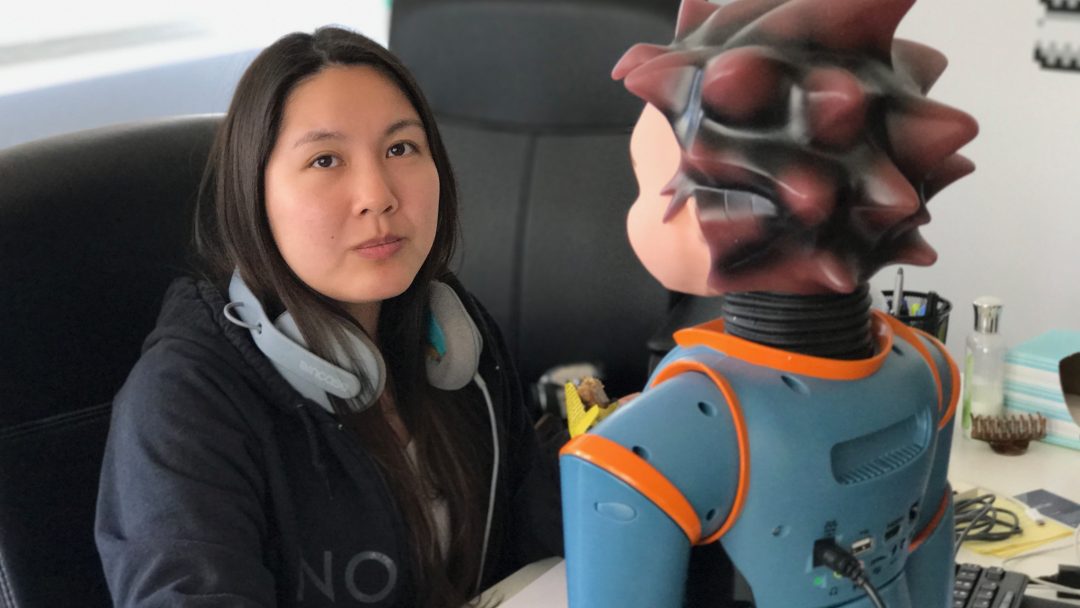Souphia Ieng is the Creative Director for RoboKind. She handles all things related to art from logo design, to 3D animations. She majored in Art and Technology at the University of Texas at Dallas, where she learned motion capture and how to rig a 3D model, which is building a skeletal structure to move a character for 3D animation. She began working part-time at RoboKind during the prototyping phase, and then transitioned to full-time when RoboKind released Milo.
Before joining RoboKind, Souphia worked on a research project funded by the U.S. military where she helped design a simulation program that trained soldiers in cultural sensitivity. The 3D space and characters designed for the simulation have complex facial movements that help a soldier recognize universal cues. Souphia’s expertise is seen within Milo’s lifelike expressions and movements.
“When designing the chest icons, we would want to keep context in mind. For example, when teaching a student what is an appropriate distance to have during a conversation, we have icons for “too close” and “too far”. Instead of illustrating a general idea of what the word “too” and what the word “close” means by definition, we drew two stick figures standing as is having a conversation, but standing a bit too close together.”
The challenge of animating a robot
Creating a robot for children with autism spectrum disorder (ASD) is no easy task. Early on RoboKind knew a core component of Milo’s curriculum would be teaching ASD children to recognize expressions. To do this, Milo needed to have an animated face. Before the animation makes it into the real world, Souphia creates the animations in a 3D environment to make sure that movements are possible. This method saves the robot from being accidentally damaged.
The second component of Milo’s curriculum is visual icons to help ASD learners associate words with actions. Milo’s chest has a digital display that gives visual cues. Instead of showing the word sad, an icon of a sad face appears along with the word ‘sad’ on the bottom. Icons help build a visual and auditory connection, allowing students to absorb concepts with ease. Souphia worked with experts to create understandable visuals for ASD learners.
“Some kids who were non-verbal just started to talk to him.”
The WOW moment
RoboKind encourages their team to visit autistic centers that use Milo to see the impact their work has on autistic children. One of the largest problems ASD children have is the inability to express their thoughts, or they are non-communicative. Souphia went to an autistic center with RoboKind and saw children who had been non-verbal for years talking to Milo. She realized that Milo created an opening for children with ASD to communicate. Within weeks of working with Milo, ASD learners could hold conversations with their families and express their thoughts.
“We all want everyone to be invested in the company more than just working for it, and to experience that we’re making a product that is helping people.”
Souphia’s Future Plans
Milo is not a replacement for teachers or therapists. He is a teacher’s assistant that creates a bridge to ASD children. To know the progress of a child, Milo records data for the therapist to evaluate. Souphia is currently working on converting the 3D Avatar to a new engine that will reach a wider audience.
